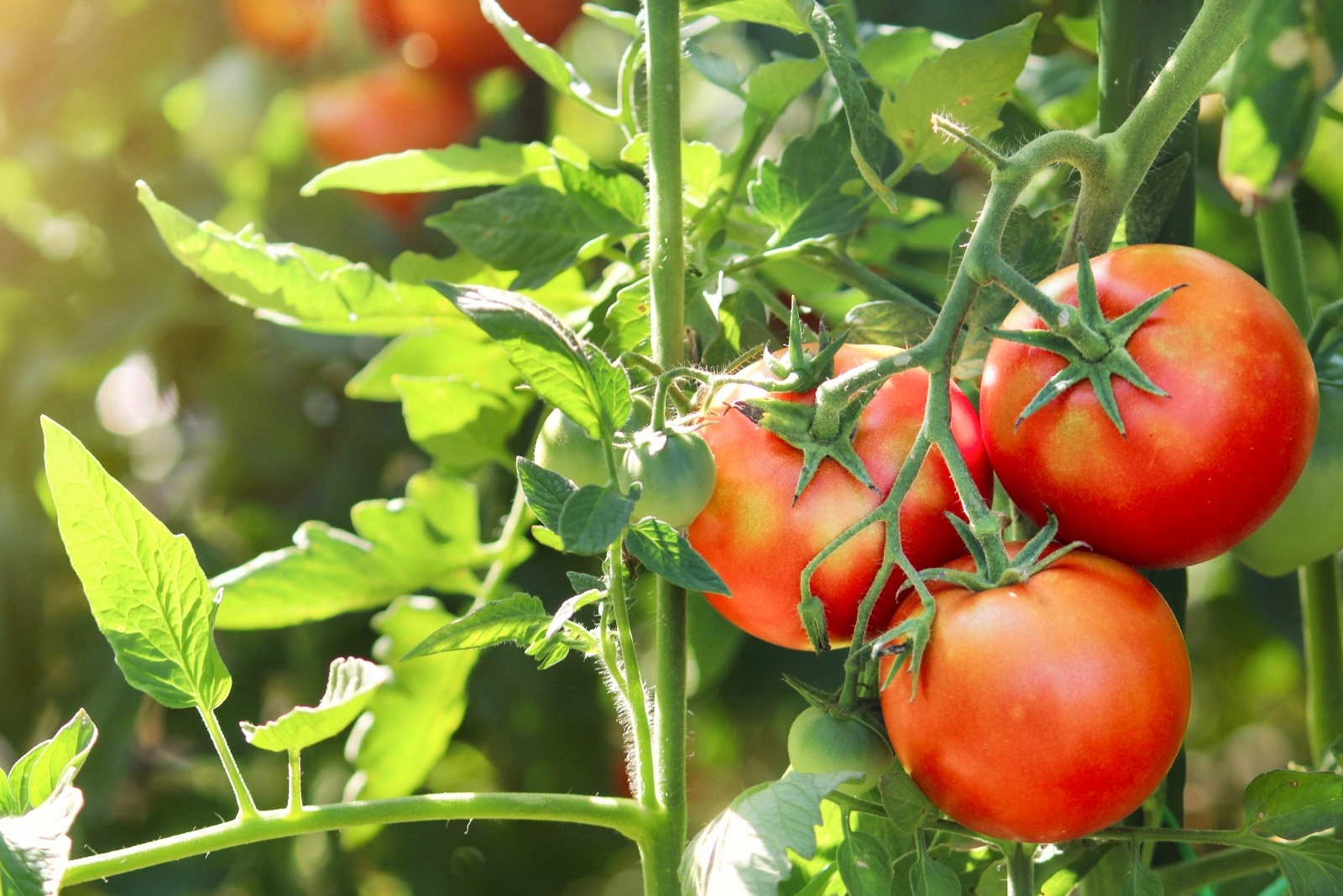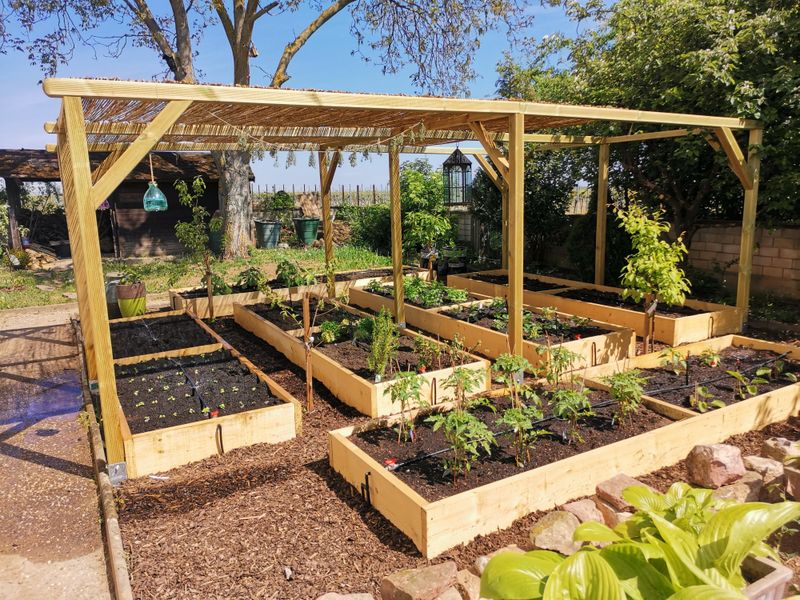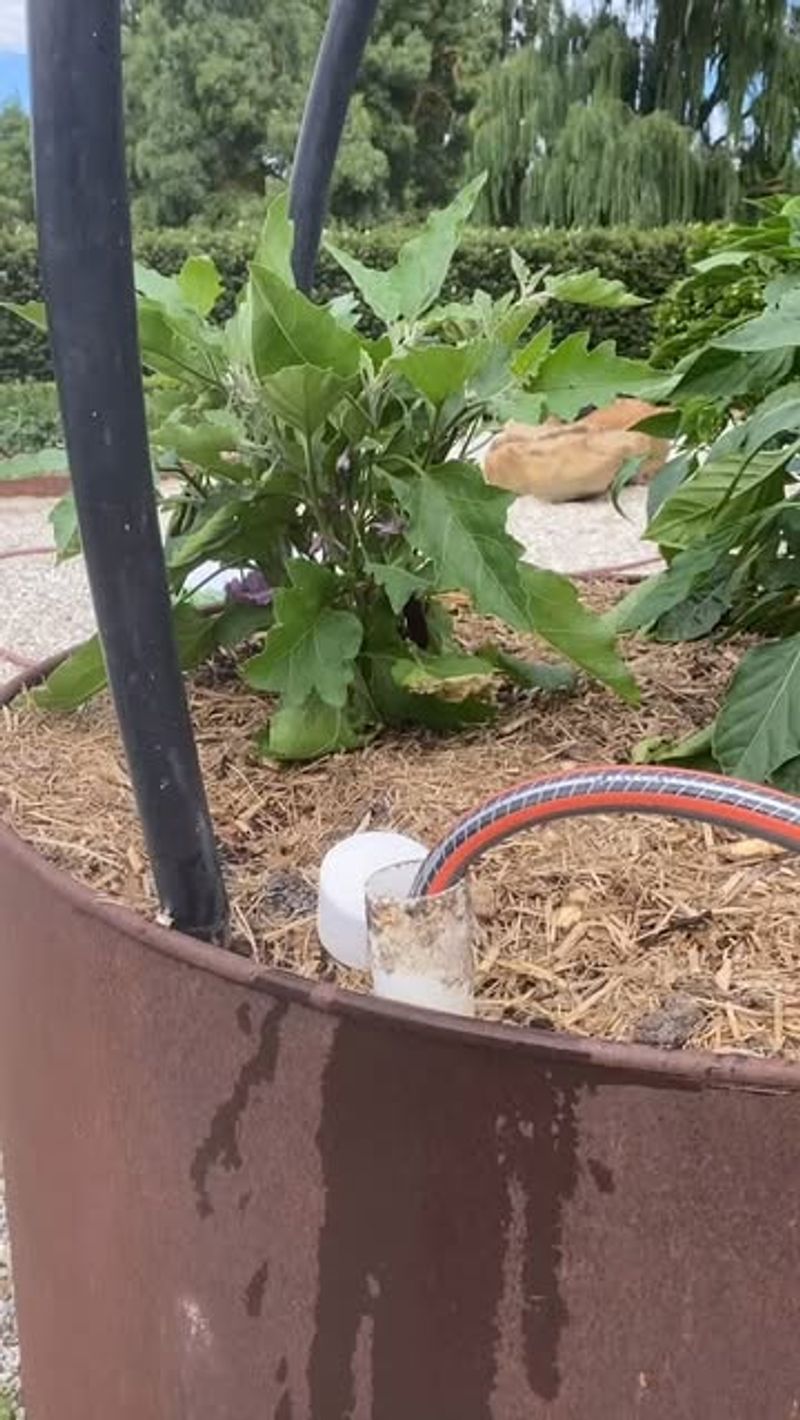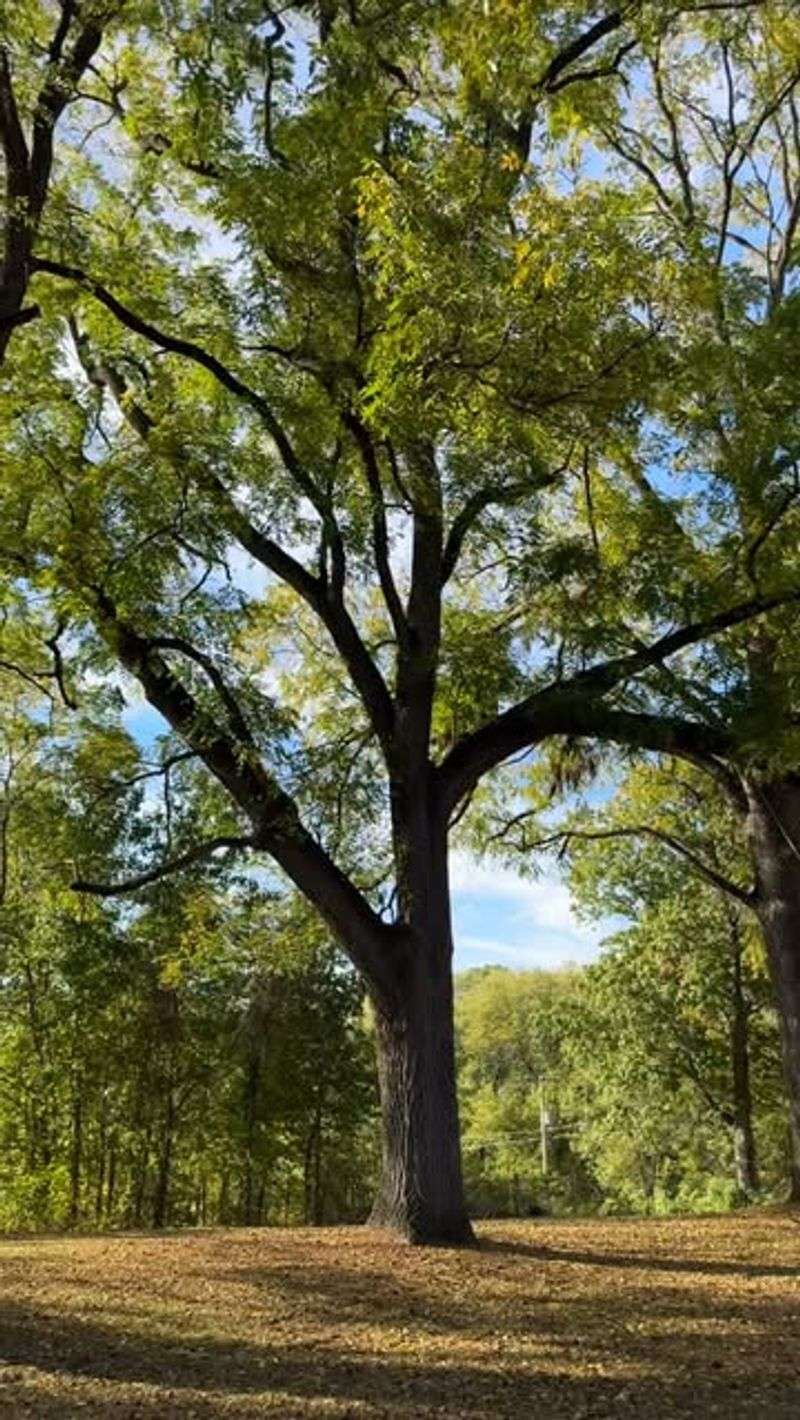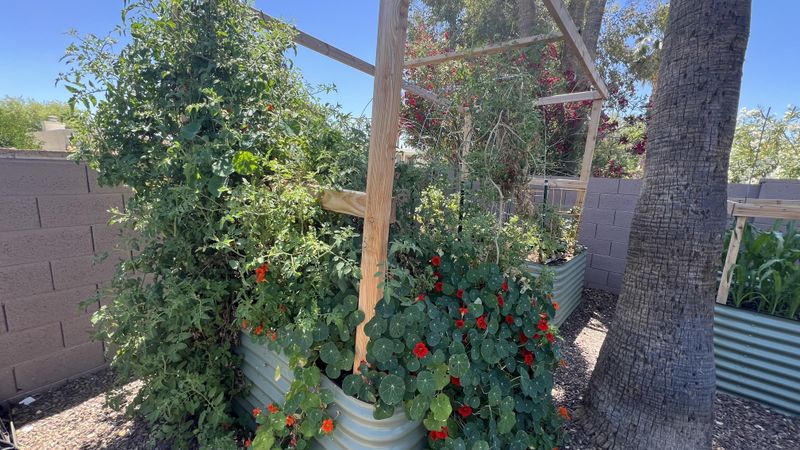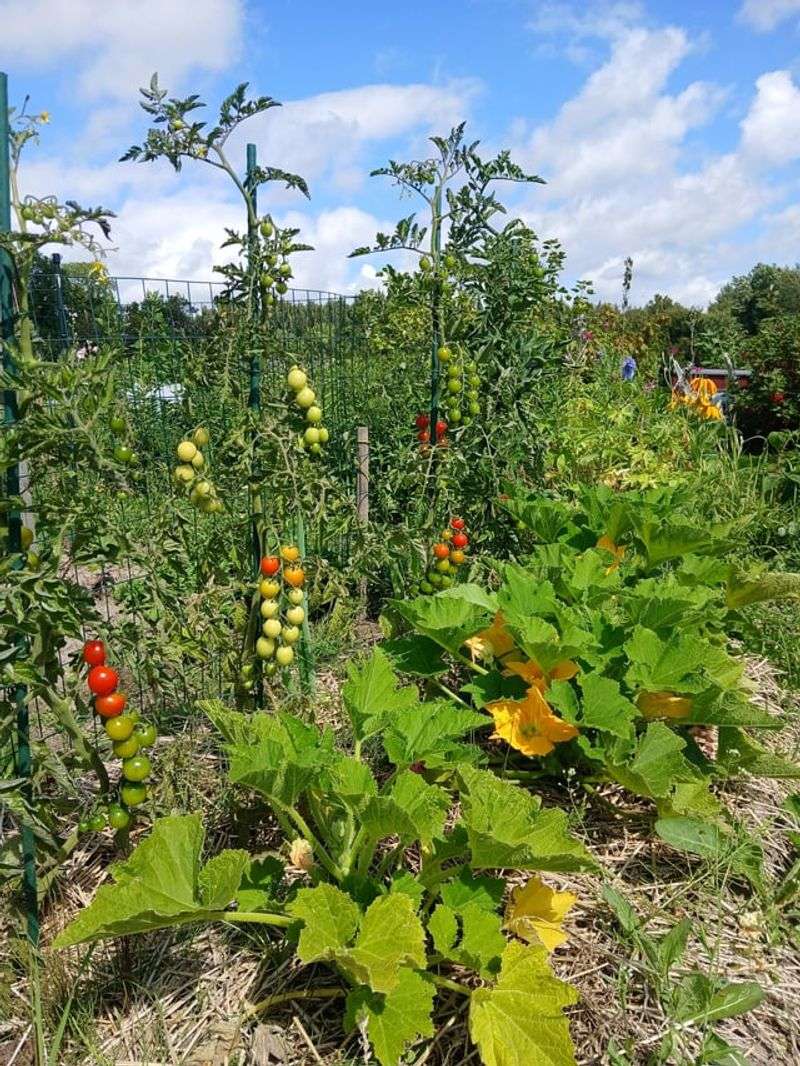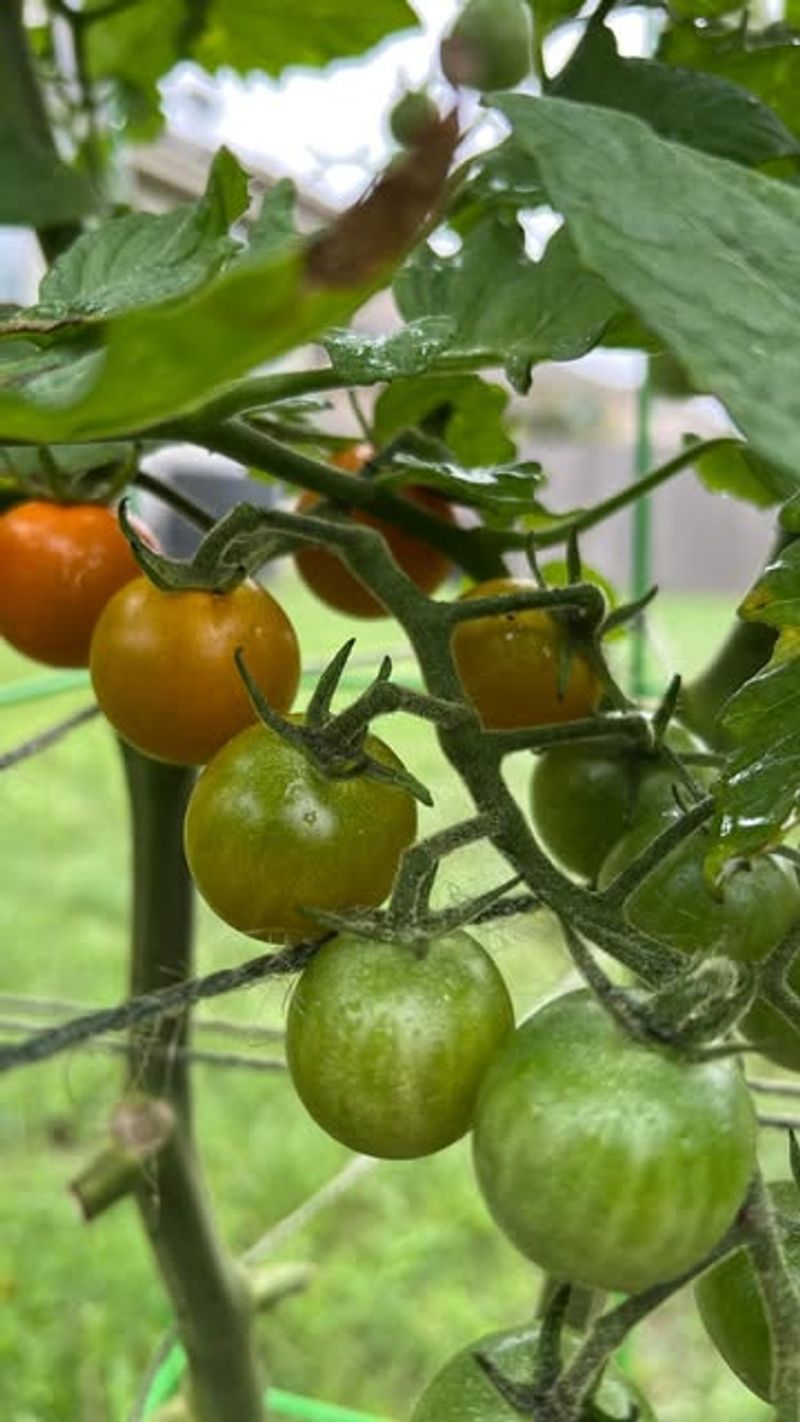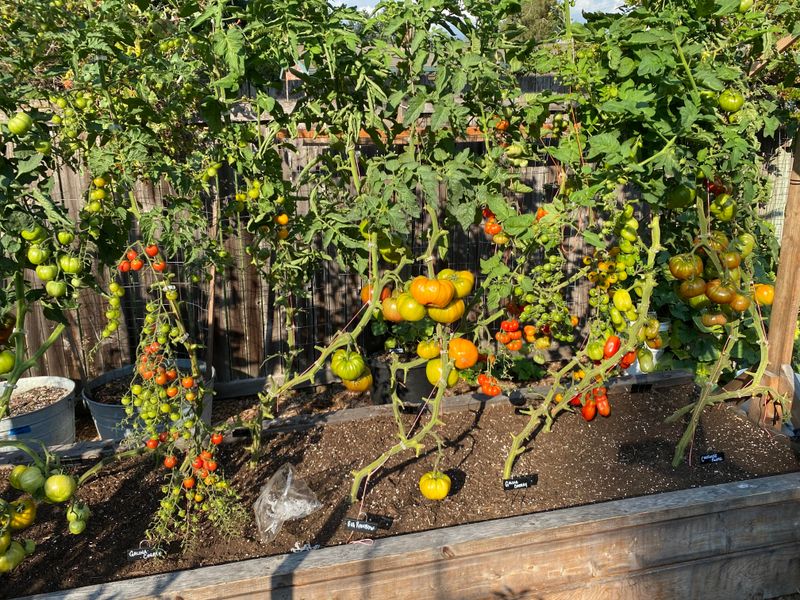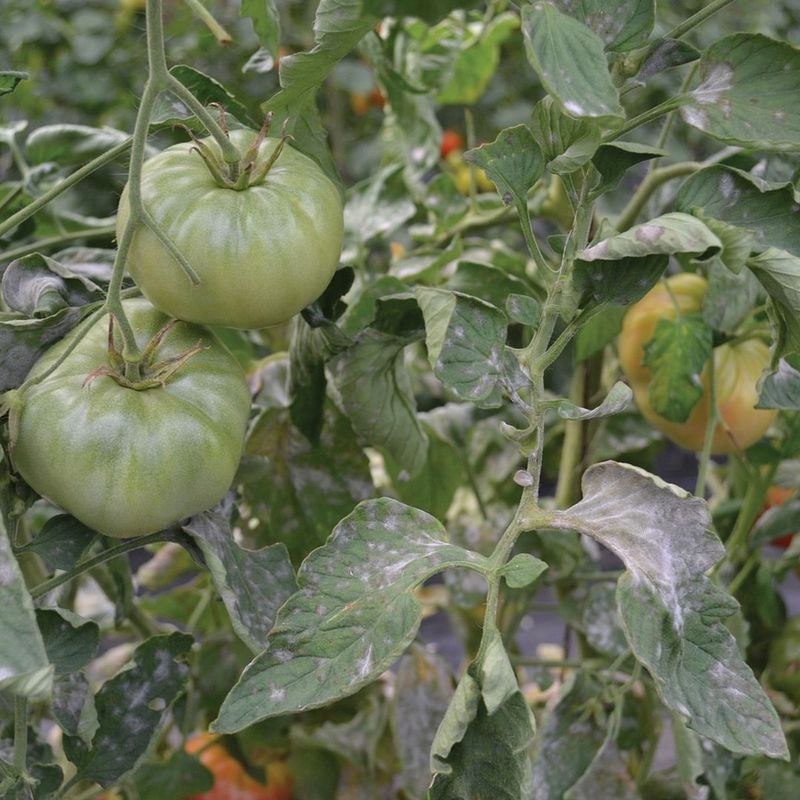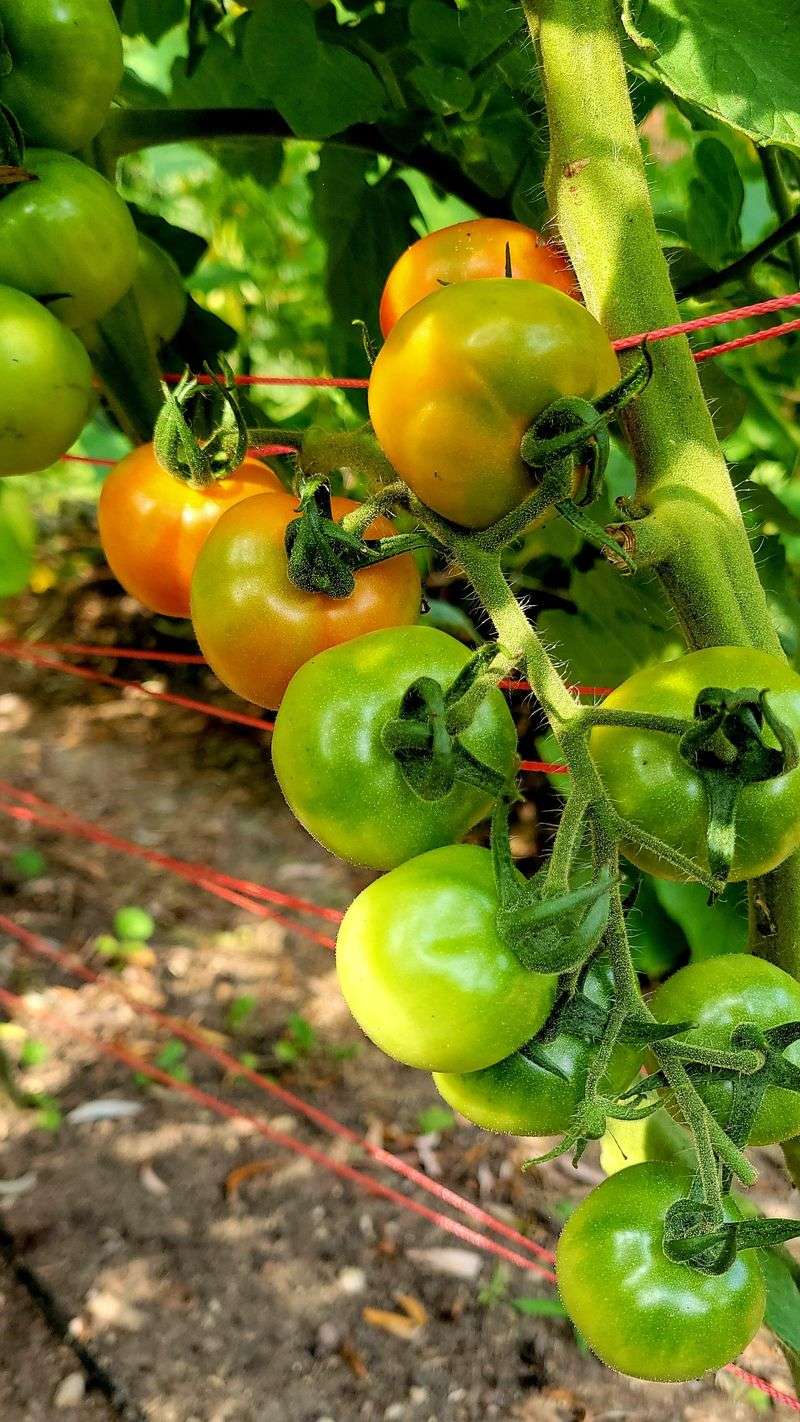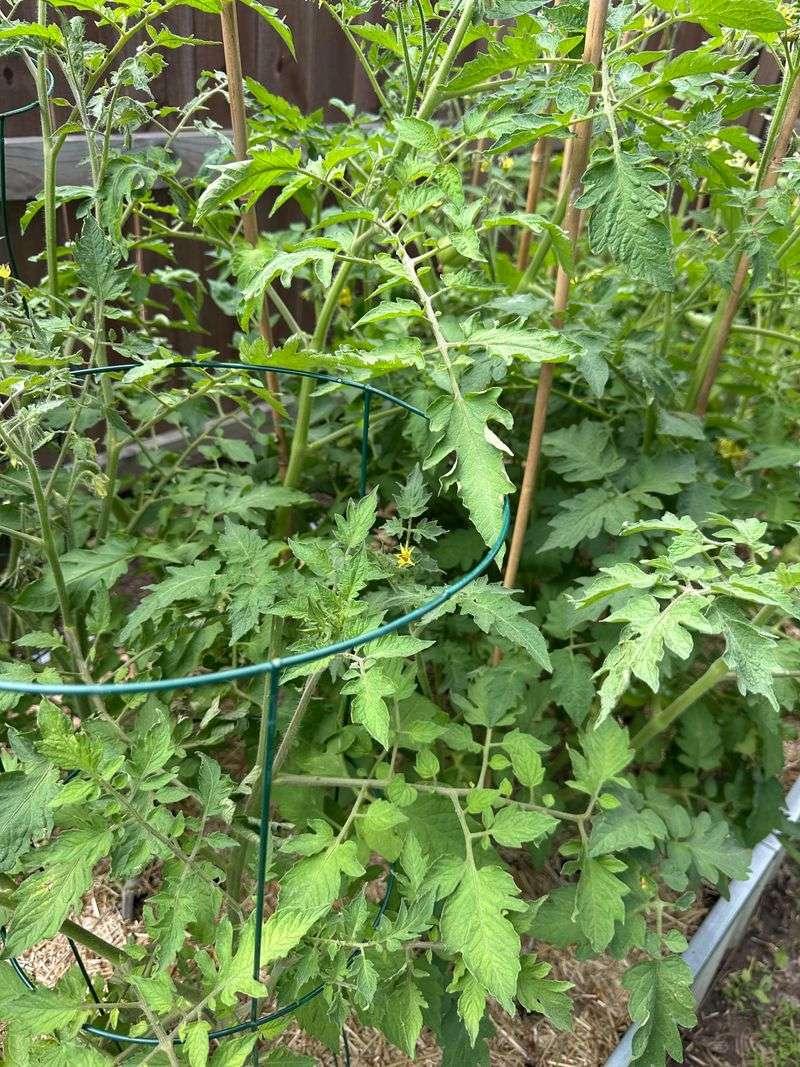Planting tomatoes in New Jersey seems simple, but picking the wrong spot can turn your garden into a struggle. Sunlight, soil, and moisture all play a bigger role than you might think.
Avoiding certain areas now saves frustration and wasted effort later. Make sure your tomato patch has the perfect conditions for juicy success.
1. Under Large Shade Trees
Planting tomatoes beneath big oak or maple trees might seem convenient, but it’s a recipe for disaster. Tomatoes are sun-loving plants that need at least six to eight hours of direct sunlight daily to produce fruit.
When positioned under dense tree canopies, your plants will stretch toward any available light, becoming weak and spindly. New Jersey gardeners often make this mistake in shaded suburban yards.
Additionally, tree roots compete aggressively for water and nutrients, leaving your tomatoes starving even with regular fertilizing.
2. Low-Lying Areas That Collect Water
Did you know that tomato roots need oxygen just as much as water? Low spots where rainwater pools create soggy conditions that suffocate roots and invite disease.
After New Jersey’s frequent summer thunderstorms, these areas stay wet for days, causing root rot and fungal problems. Your plants will yellow, wilt, and eventually die despite your best efforts.
Choose higher ground with good drainage, or build raised beds if your entire yard tends to hold water after storms.
3. Right Next To Black Walnut Trees
Black walnut trees produce a chemical called juglone that’s poisonous to tomatoes and many other garden plants. Even if the tree isn’t directly overhead, its roots spread far underground, releasing this toxin throughout the soil.
Tomatoes planted within fifty to sixty feet of these trees will wilt suddenly, turn yellow, and die within days. Many New Jersey properties have mature black walnuts as landscape trees.
Always identify trees before planting, and keep your tomato garden well away from these beautiful but deadly neighbors.
4. Against North-Facing Walls or Fences
North-facing structures create permanent shade zones that never receive adequate sunlight for tomato production. While south-facing walls actually benefit tomatoes by reflecting heat and light, northern exposures do the opposite.
Your plants will grow slowly, produce fewer flowers, and develop small, pale fruits that never fully ripen. New Jersey’s latitude means northern exposures get especially limited sun during the growing season.
Save these spots for shade-loving plants like lettuce or hostas, and position your tomatoes where they’ll bask in southern or western sun.
5. In Heavy Clay Soil Without Amendment
New Jersey’s soil varies widely, but many areas have dense clay that becomes rock-hard when dry and sticky when wet. Tomato roots can’t penetrate this compact soil, leading to stunted, shallow root systems.
Clay also drains poorly, creating the waterlogged conditions tomatoes absolutely hate. Without adding compost, peat moss, or other organic matter to improve texture, your plants will struggle all season.
Work in several inches of amendments before planting, or consider container gardening if your clay is particularly stubborn and unworkable.
6. Too Close To Other Nightshade Family Plants
Peppers, eggplants, and potatoes are all relatives of tomatoes, sharing similar diseases and pests. Planting them together creates a buffet for problems like hornworms, early blight, and verticillium wilt.
When one plant gets infected, the disease spreads rapidly to its neighbors, potentially wiping out your entire harvest. New Jersey’s humid summers make disease spread especially quick among closely planted nightshades.
Practice crop rotation and give each plant family its own section of the garden with at least three feet of separation for better air circulation.
7. In Windy, Exposed Corners
Strong winds can snap tomato stems, tear leaves, and knock developing fruits to the ground before they ripen. Corner lots and open areas without windbreaks leave your plants vulnerable to New Jersey’s coastal breezes and summer storm gusts.
Constant wind also dries out soil rapidly, stressing plants and requiring more frequent watering. Your tomatoes will develop thick, tough stems as they struggle against the wind rather than putting energy into fruit production.
Plant near buildings, fences, or hedges that provide protection, or install temporary windscreens around your garden beds for the season.
8. Where Previous Tomatoes Had Disease
Soil memory is real when it comes to plant diseases. If last year’s tomatoes suffered from blight, wilt, or other fungal problems, those pathogens are still living in that exact spot, waiting for new victims.
Planting in the same location year after year guarantees recurring disease problems that get worse each season. New Jersey’s humid climate helps these pathogens survive winter and remain active in the soil.
Wait at least three years before returning tomatoes to the same bed, or replace the soil entirely if you must use that location again.
9. Near Treated Lumber or Pressure-Treated Structures
Older pressure-treated wood contains arsenic and other chemicals that leach into surrounding soil over time. While newer treatments are safer, it’s still wise to avoid planting edible crops directly against these structures.
Tomato roots can absorb these chemicals, potentially contaminating your harvest with substances you definitely don’t want to eat. Many New Jersey homes have older deck boards, fence posts, and raised beds made from treated lumber.
Use untreated cedar or composite materials for edible gardens, or line treated wood structures with heavy plastic to create a barrier between wood and soil.
10. In Compacted High-Traffic Areas
Pathways, play areas, and spots where people or pets frequently walk develop soil so compacted that water runs off instead of soaking in. Tomato roots need loose, aerated soil to spread and access nutrients.
Compacted ground acts almost like concrete, preventing root growth and creating drainage problems that lead to standing water. New Jersey gardeners sometimes try to reclaim lawn areas without properly loosening the soil first.
Till or dig deeply to break up compaction, add organic matter generously, and keep foot traffic away from your growing areas throughout the entire season.

